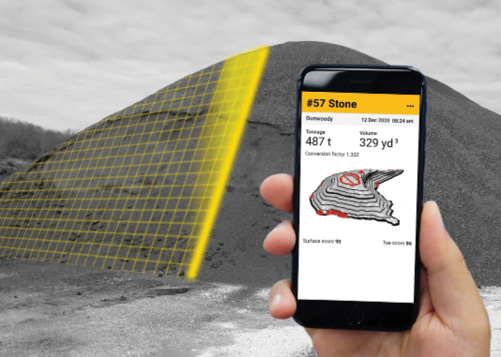
The accuracy of your stockpile inventory measurements directly impacts your company’s bottom line. Is measurement accuracy truly such a big deal? It’s common for bulk materials companies to have massive 30% to 40% deviations on their perpetual inventories.
How do you measure your stockpiles better and thereby save yourself a headache down the road? With some simple, practical adjustments on your part, you will be able to get much more accurate readings. Note that these methods will work best if you use Stockpile Reports’ proprietary inventory management system.
Move piles away from each other – The closer your piles are, the harder it is for the cameras to delineate them. For best results, there should be sufficient space between all of your stockpiles. That way, the processing software has little trouble distinguishing where one pile ends and the other begins. In the case of ground-based measurements, there should be enough room for your employee to walk around the piles and capture the entire thing on video. An 8- to 10-ft. gap between two stockpiles is ideal. You should never combine your stockpiles. Finally, there should be no obstructions like light poles or trucks around your piles.
In case you’ve stored piles in a bunker or have built walls around them, then you should measure the structure’s dimensions accurately and upload them to the software. For best results, use straight walls when building your storage, not “falling” or sloping ones. Ensure there is no material spillage, it can throw off the accuracy of the measurements.
Fix drainage problems around stockpiles – Is there any water spill-off or drainage problem around your stockpiles? If a portion of your pile is submerged in water, it can throw off the measurements. The camera will record only the visible portion, not the submerged part, giving you a false read on the volume. Even 3 or 4 in. of water makes a difference. Further, if water gets into your stockpiles, it may affect the density and volume of the pile. This could divert the measurements even more. For best results, make sure water doesn’t get anywhere near your piles. The software does try to account for the water, but it doesn’t always work.
Cut down vegetation around your piles – Some sites have an abundance of vegetation, especially during and after the wet seasons. When this vegetation gets into the piles or starts growing on them, it’s a problem for the image processing system. This counts for scrubs like trees, shrubs, flowers, weeds, and grass. If an employee walks around the pile with scrub, it’s an obstruction for the camera. If there are trees, shrubs, and other leafy blockages on top of the pile, then a drone flying overhead will have its view occluded. For best results, keep the area around and on your pile clear of vegetation.
Update densities or conversion rates – Your stockpiles’ densities aren’t always static. When the weather changes, so does the water content in the air. If your stockpiles are made of moisture-absorbing materials like sand, then their unit weights will change based on the season. This is especially true if you store your materials outside without shelter of any kind. When stockpile volumes get converted into tonnages and recorded into the books, then the unit weight is one of the factors determining the calculations. Stockpile Reports recommends updating your material densities and, by extension, conversion rates at least semi-annually, if not quarterly. Further, follow the tried-and-tested C29M measurement method and test only damp materials.
Ensure proper lighting on indoor stockpiles – When it comes to indoor piles, lighting is often a problem. Many companies fail to install adequate indoor lighting, often as a cost-cutting measure. Unfortunately, this prevents the camera from capturing a clear picture of the stockpile in question. This translates into a poor feed for the image processing system, which struggles to interpret the data accurately. It’s a good idea to install extra lighting in dark areas around your indoor piles if possible. Temporary portable lighting is an economical option. Further, investing in an iPhone with better night-vision capture mode could help.
Upgrade to new phone technology every few years and download the Stockpile Assessment Worksheet from Stockpile Reports.
Stockpile Reports, www.stockpilereports.com
